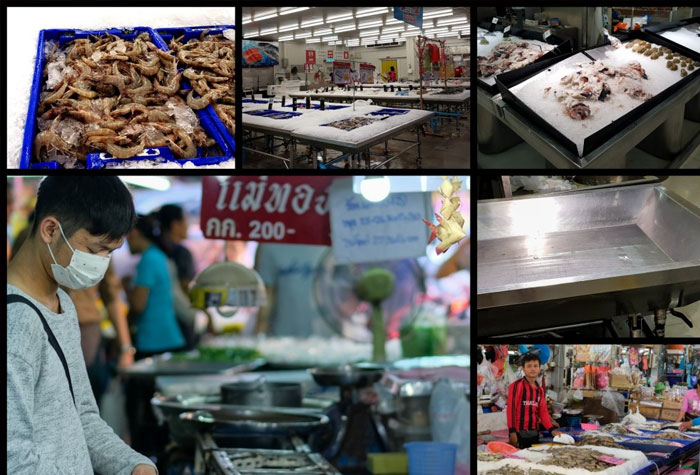One Minute Summary
- Wet market inspired fixtures in modern supermarkets have been a fashion for several years
- Fish displayed on open ice-beds, bakery products on wooden racks, fresh fruit you can feel
- Chefs would also visit real wet-markets early each morning to buy their fresh products
- With Covid-19 being linked to a Wuhan wet market and with people becoming more aware of the risks from viral contamination, we are likely to see a shift to food fixture with more focus on hygiene, and chef’s visiting wet markets will be seen as irresponsible.
__________________________________________________________________
In the movie The Devil Wears Prada, Miranda Priestly (Merryl Streep) explained to her new Assistant how the colours of her clothes were influenced by fashion houses who successfully predicted future customer trends. I saw this process myself when I was a Director of George Clothing – at a pre-season event the buyers had contsructed displays of current events that may influence customer trends, and they had matched these to the colours and fabrics they predicted will be popular in the next season. The Buyers would then walk amongst the displays before they started work on next seasons ranges.
At the time, Gulf War II was in full swing, and the photographs showed news coverage of US troops in desert camouflage – and their prediction was that beige and olive would be the colour palette and pixelated camouflage would be a popular pattern. They were right, and George Clothing had a great year for sales.
If we did a similar exercise to predict food retail trends, we’d be creating displays of customers wearing surgical masks, carrying hand sanitizer and all trying to keep 1 meter from each other.
So what does this mean for the future of food retail?
One impact will be on the current trend for open displays of ‘abundant’ market-style products that customers can see and feel. Customers will now be looking for reassurance that food has not been ‘contaminated’. Who would of thought that the survival rates of viruses would become dinner party conversation along with case Fatality Rates and incubation periods.
Another impact will be a reluctance to visit wet-markets, especially in China. The days of the hotel Head Chef getting up every morning at 5:00 A.M to visit the local wet market may be over. And there may also be an impact on the buffet brunch – little point wearing a mask if you’re going to food that been on display?
There’s already been a growth in grocery home shopping and food delivery services, and this looks like a good time for on-line shopping services to develop their offers to cater for commercial buyers looking for high quality, local products, Blockchain end to end traceability will also become more important and temperature controlled delivery to your door will be another growth area.
But this does not mean that food displays need to become sterile and that everything needs to be hermetically sealed. Just before we all became scared of viruses, we were worried that the planet was being destroyed by plastic bags – so new retail display concepts are needed that combine the attractive displays of fresh foods we liked in the wet-markets, with the growing awareness of the need for good hygiene.
My guess is that customers will want to see hand washing facilities next to the counters, perhaps air-curtains in front of displays, disposable gloves (made from recycled plastic or 100% plant based materials) for use by customers, staff wearing face masks, perhaps showing the company logo, or perspex sneeze shields so we can still see a welcoming smile.
Whatever the new trends that will be sparked by the Covid-19 outbreak, any business that fails to respond to the changing customer trends will be in for a bad year, just like a fast fashion brand that went for floral prints when the rest of the industry was into desert camouflage.

